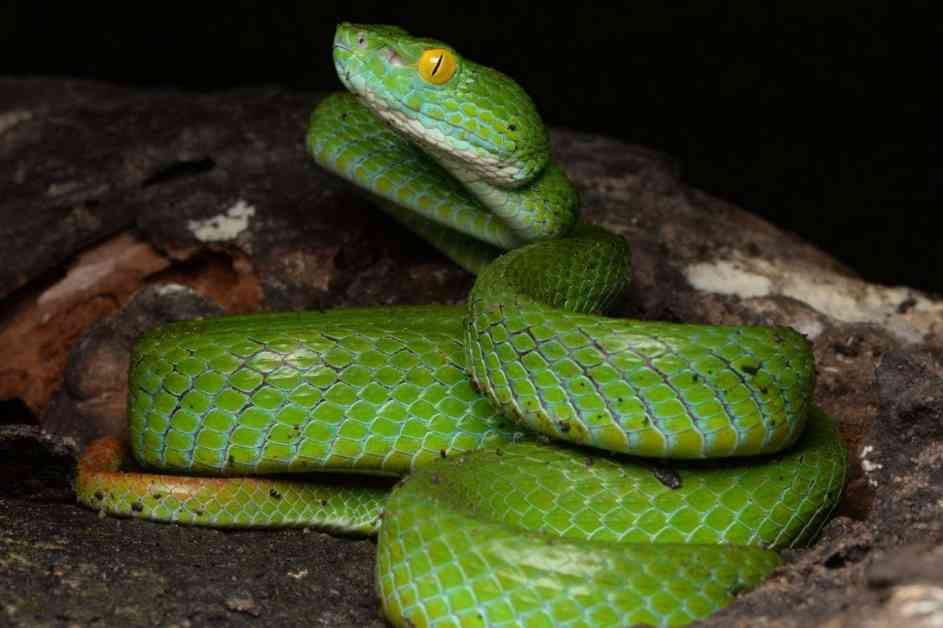A recent discovery in the world of wildlife has brought attention to a new species of snake found in Vietnam. This snake, named Trimeresurus cyanolabris, has captured the interest of researchers due to its unique and vibrant appearance. With a bright grass-green body, yellow eyes, blue lips, chin, and throat, as well as a brick-red tail, this snake has been appropriately nicknamed the blue-lipped green pit viper.
Researchers have observed that the blue-lipped green pit viper primarily inhabits dry tropical forests in central Vietnam. It is known to feed on small frogs and lizards and is most active during dusk and after nightfall. During the day, the snake can be found perched on branches or in tree hollows near streams, showcasing its striking colors to the surrounding environment.
What sets T. cyanolabris apart from other snake species is not only its vibrant colors but also its smaller size and genetic makeup. Through genetic analysis conducted by Sabira Idiiatullina and her colleagues at Moscow State University in Russia, it has been confirmed that this snake is indeed a distinct species that was previously unrecognized. Furthermore, researchers have identified the closest known relative of the blue-lipped green pit viper to be the red-eyed Trimeresurus rubeus.
The discovery of T. cyanolabris sheds light on the diversity within the Trimeresurus genus, which consists of 50 closely related Asian species of pit vipers. It is likely that further genetic analysis will uncover additional Trimeresurus species, considering it is one of the most species-rich groups of venomous snakes known to researchers. However, the habitats of these snakes are increasingly at risk due to deforestation in the regions where they reside.
The identification of a new snake species serves as a reminder of the importance of preserving biodiversity and protecting natural habitats. As human activities continue to impact ecosystems around the world, it is crucial to conduct research and conservation efforts to ensure the survival of unique species like the blue-lipped green pit viper. By understanding and appreciating the rich tapestry of life on Earth, we can work towards a more sustainable future for all living organisms.






